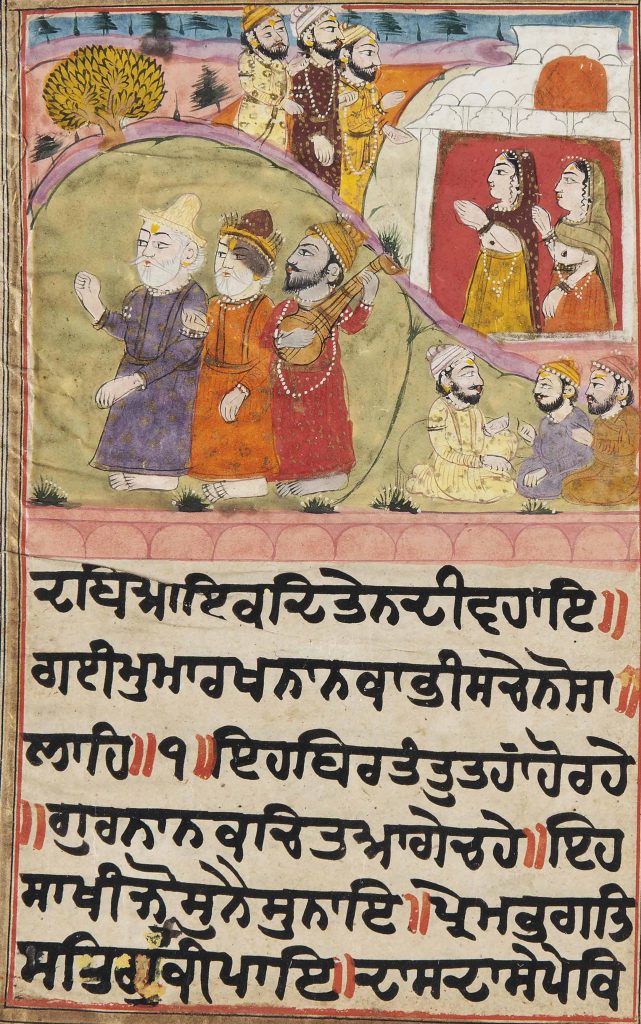ADI SAKHIAN (adi = first; sakhian, plural of sakhi = anecdotes, stories, discourses, parables) is one of the early compilations but not the first of the extant janam sakhi traditions to evolve. The manuscript, dated 1758 Bk/ AD 1701, and copied by Shambhu Nath Brahman was first located by Dr Mohan Singh Diwana. While teaching at Panjab University, Lahore, prior to the partition of India in 1947, Mohan Singh Diwana discovered in the University`s library a janam sakhi manuscript which differed from other extant Janam sakhis and bore an earlier date. Dr Diwana believed it to be a version of the earliest of all janam sakhi traditions and bestowed on it the name Adi Sakhian.
DHIAN SINGH (d. 1705), a devoted Sikh of the time of Guru Gobind Singh. He was one of the warriors who took part in the battle against Said Khan. He fell a martyr in the battle of Chamkaur (7 December 1705). M.G.S. DHIAN SINGH, resident of the village of Majri near Chamkaur in presentday Ropar district of the Punjab, was a devoted Sikh of the time of Guru Gobind Singh (1666-1708).
Explore Mansukh's spiritual journey from Lahore to Ceylon, spreading Guru Nanak's teachings and forming a fellowship of disciples. Discover his legacy.
Discover the tale of Singha Bhai, who aided Guru Tegh Bahadur during his travels, offering service that led to dual responsibility and privilege.
Uncover the secretive Aghori sect of Saivism, linked to Kapalika traditions and known for extreme rituals and spiritual beliefs.
DIKKH, village 12 km to the north of Maur Kalan (30° 4`N, 75° 14`E) in Bathinda district of the Punjab, is sacred to Guru Tegh Bahadur, who visited it during his travels in these parts. According to Sakhi Pothi, an humble Sikh entreated the Guru to come and put up in his house. The Guru accepted his invitation. He blessed his host who had served him with complete devotion. The Sikh, who was childless, had four sons thereafter.A memorial platform raised in honour of the Guru, about 200 metres west of the village, was later buried under sand; but, as memory of the Guru`s visit survived, it was uncovered again and a singleroom gurdwara established on the site in 1917.
Discover the rich prose and poetry of Meharban in Janam Sakhi. A precious reflection of 17th-century Sikh literature.
Explore Amar Katha, a hagiographic manuscript on Guru Nanak. Discover its mystic tales preserved in rare libraries since the 18th century.
DUNI CHAND is described in Puratan Janam Sakhi as a Dhuppar Khatri of Lahore who held in the parganah the revenue rank of karori (lit. the holder of a karor or ten million). He was performing sraddha or anniversary feast for his deceased father when he learnt that the holy saint Guru Nanak had arrived in the city. He invited him to his house which displayed seven flags fastened upon the door top. Asked what these flags signified, Duni Chand proudly explained that they indicated the degree of his opulence, each flag denoting wealth worth a lac or a hundred thousand.




